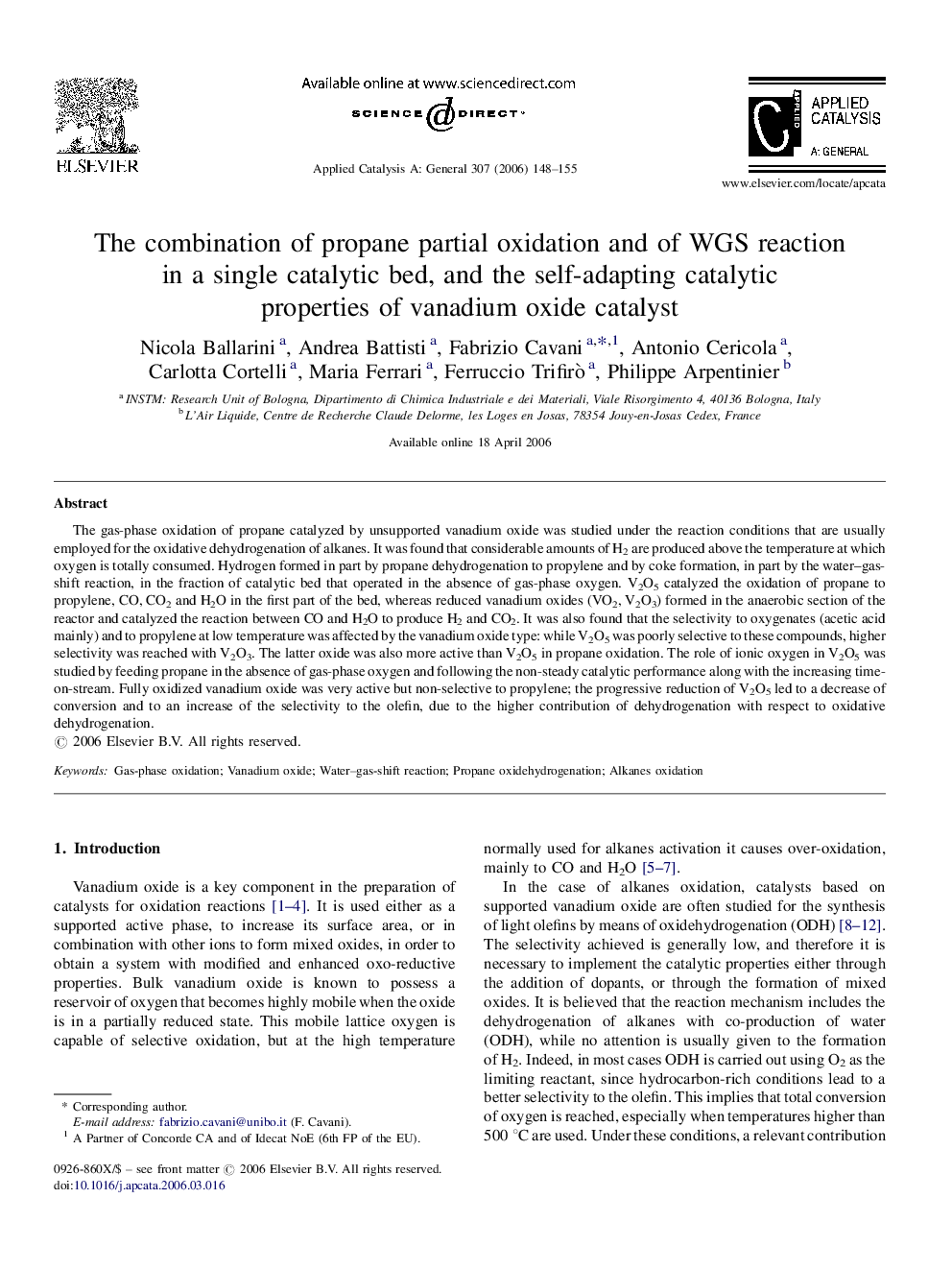| Article ID | Journal | Published Year | Pages | File Type |
|---|---|---|---|---|
| 44686 | Applied Catalysis A: General | 2006 | 8 Pages |
The gas-phase oxidation of propane catalyzed by unsupported vanadium oxide was studied under the reaction conditions that are usually employed for the oxidative dehydrogenation of alkanes. It was found that considerable amounts of H2 are produced above the temperature at which oxygen is totally consumed. Hydrogen formed in part by propane dehydrogenation to propylene and by coke formation, in part by the water–gas-shift reaction, in the fraction of catalytic bed that operated in the absence of gas-phase oxygen. V2O5 catalyzed the oxidation of propane to propylene, CO, CO2 and H2O in the first part of the bed, whereas reduced vanadium oxides (VO2, V2O3) formed in the anaerobic section of the reactor and catalyzed the reaction between CO and H2O to produce H2 and CO2. It was also found that the selectivity to oxygenates (acetic acid mainly) and to propylene at low temperature was affected by the vanadium oxide type: while V2O5 was poorly selective to these compounds, higher selectivity was reached with V2O3. The latter oxide was also more active than V2O5 in propane oxidation. The role of ionic oxygen in V2O5 was studied by feeding propane in the absence of gas-phase oxygen and following the non-steady catalytic performance along with the increasing time-on-stream. Fully oxidized vanadium oxide was very active but non-selective to propylene; the progressive reduction of V2O5 led to a decrease of conversion and to an increase of the selectivity to the olefin, due to the higher contribution of dehydrogenation with respect to oxidative dehydrogenation.
